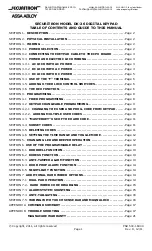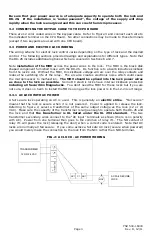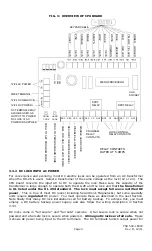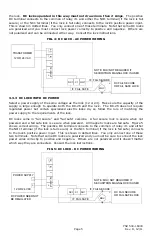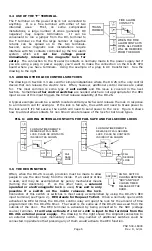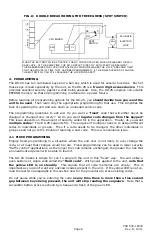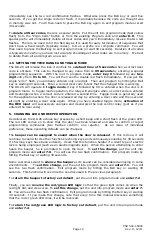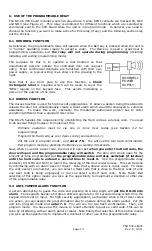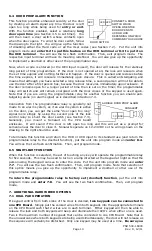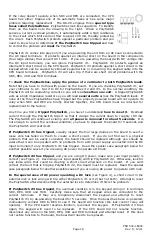
PN# 500-16900
Page 8
Rev. D, 12/11
FIG. 8: DOUBLE BREAK WIRING FOR FREE EGRESS (SPDT SWITCH)
4. PROGRAMMING
The DK-26 has ten numbered keys and a bell key which is used for several functions. Each of
these keys is read separately by the unit, so the DK-26 is a true 11 digit access device. This
provides excellent security against a code being guessed. Also, the DK-26 employs non-volatile
EEPROM memory so that all programming is retained in a power failure.
Before learning all programming options for the DK-26, you should decide how you want the
unit to be used. Then learn only the appropriate programming for that use. This simplifies the
task of operating the unit and cuts down on unneeded service calls.
The programming questions to ask are: do you want a “fixed” code that will either never be
changed or changed only rarely? Or do you want regular code changes from the keypad?
This issue depends on the amount of security called for in the application. Finally, do you want
multiple codes? The DK-26 supports 59. The purpose of multiple codes is to assign different
codes to individuals or groups. Then if a code needs to be changed, the other individuals or
groups need not go to the trouble of learning a new code. This is a convenience issue.
4.1 FIXED PROGRAMMING
Employ fixed programming in a situation where the end user is not likely to ever change the
code, or at least that changes would be rare. Fixed programming can be used in lower security
"traffic control" applications, as the longer the code remains unchanged, the greater the risk that
an unauthorized person will be able to learn it.
The DK-26 makes it simple for you to program the unit in this “fixed” way. You will utilize a
push button set, single code called the “Hard code”. With power applied to the unit, note that
the yellow LED is on steadily. This signals that all code memories are empty. This is
important as you don’t want any unknown codes present in the unit. If the yellow LED is not on,
read the last two paragraphs in this section now for the procedure to erase existing codes.
Do not pause while you’re entering the code as any time there is more than a five second
gap between keys being pressed, the unit will stop reading the sequence. Note that a
successful button press is echoed by a beep and a flash of the green LED.
ELECTRIC
LOCK
MOV
CPU BOARD
C
NC
NO
SPDT
SWITCH
FAIL SAFE
REX
NC1
C1
AC
IN
F
D
C I
N
/O
U
T
+
+
WHEN THE EXIT SWITCH IS ACTIVATED, THE NC CONTACTS OPEN WHICH RELEASES THE FAIL
SAFE LOCK. AT THE SAME TIME, THE NO CONTACT DIRECTLY ACTIVATES THE REX INPUT.
THIS DEENERGIZES THE LOCK CONTROL RELAY WHICH RELEASES THE LOCK "A SECOND TIME"
FOR THE AMOUNT OF TIME THAT HAS BEEN PROGRAMMED. IF THE DK-26 SUFFERS A FAILURE,
THE EXIT SWITCH CAN STILL RELEASE THE LOCK FOR SAFETY.
Summary of Contents for Securitron DK-26
Page 23: ......


